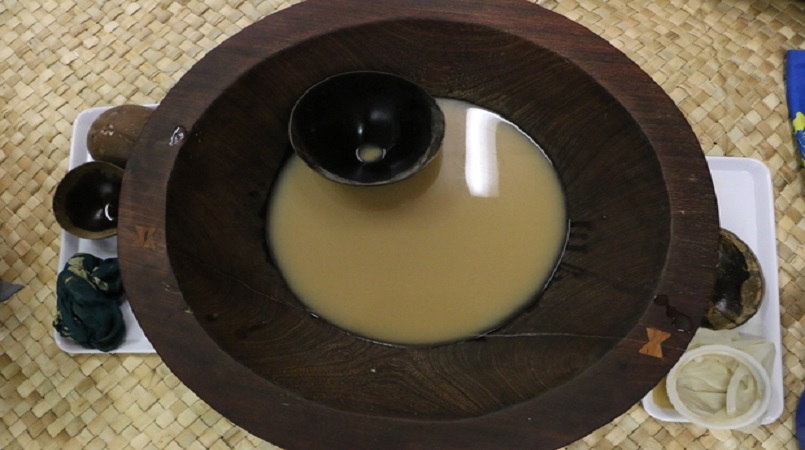
Clap once, down a coconut shell of muddy water, then clap three times and pass on the shell while your tongue slowly numbs...
Kava is a popular drink consumed in Pacific countries such as Fiji, Tonga, and Vanuatu, with variations on the ceremony surrounding its consumption.
But, in recent times, the narcotic's popularity outside the islands has grown and, with it, questions about how kava drinking mixes with contemporary life – in particular, driving.
Dr Apo Aporosa is a post-doctoral research fellow at the University of Waikato and a former police officer of Fijian ancestry. He is investigating the effects of kava on driving ability.
“I regularly drink kava and drive. There’s only been one or two occasions where I’ve questioned whether or not I should be driving,” he says. “It’s a big unknown.”
Kava is a narcotic that results in the user feeling relaxed. It is made from the root of the piper methysticum plant, which is dried, ground into a powder and mixed with water in a tanoa, or wooden bowl.
RNZI reports the police are reporting increasing numbers of ‘kava-intoxicated’ drivers, Dr Aporosa says - and he has heard anecdotally from people who say they have reversed into a gate or travelled at a slow speed after drinking it.
“The other issue about that, [and] hopefully I don’t sound like I’m sitting here making excuses for kava,” he says, “ is [that] we spend a lot of hours drinking kava.”
Dr Aporosa and his mates might participate in three to four sessions a week on consecutive nights until about 2am, he says.
“Then some of those people are getting up and going to work at six. So let’s take kava out of the equation. You’re really tired and then you’re driving, so I think some of it is tied into [that]."
Between 20,000 and 25,000 people are estimated to be drinking kava throughout New Zealand every Friday and Saturday night. It’s not known exactly how many drive off afterwards, but Dr Aporosa says research suggests about 70 percent of users use motor vehicles after drinking sessions.
Tests are not yet available to tell how much kava is too much to drive.
“There is a standard set by the pharmacological industry that says you should not consume any more than 300 milligrams of kava per day – that’s kavalactone, the active ingredient inside kava – but on an average Friday night I’d probably consume 20,000 milligrams,” Dr Aporosa says.
Kava has a different effect to alcohol, and Dr Aporosa says he’s not overly concerned about driving after drinking it.
“You couldn’t use it as an excuse to go out fighting – it’s very different to alcohol like that – or to commit an offence, you could never use kava as an excuse,” he says.
“If I was overly concerned I wouldn’t be driving after kava. I’ve got a really anti... against alcohol drink-driving [attitude] because I’ve cleaned up some really ugly messes, you know, and I wouldn’t be driving.”
Kava’s popularity has also grown among followers of teetotal religions including the Church of Jesus Christ of Latter Day Saints, commonly known as the Mormons.
One of those followers is Daniel Hernandez, who was introduced to kava in his home state of Utah, which led him to study for a PhD on kava, identity, and songs at the University of Auckland.
Tea, coffee and alcohol are prohibited for Mormons, but Mr Hernandez says there are no restrictions around kava in the church’s scriptural canon. Instead, conflict arises from cultural or social tensions within Mormon populations.
“Some of the things that I’ve heard is it’s because of the female tou’a that will serve the kava, some people have said that that leads to marital discord, so if you have married men in a circle where a woman is serving kava then they’re afraid that it’s going to lead to that.”
“Some religions have embraced kava and you can even drink kava in church,” he says. “Mormons not so much, so that’s where there’re some differences.”
As a teenager, Mr Hernandez had friends who were worried about his kava drinking but he has never had an issue with the drink and often invites people to discuss their concerns over a bowl of kava – an invite he says is normally denied.
“Here in New Zealand, as well as in Utah, some congregations at the local level will push a ban,” he says.
“But myself, I’m involved with a lot of Mormon kava drinking groups. None are sponsored by the church, but they just happen to be Mormons, so it’s still very prominent within the communities.”
